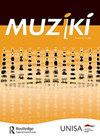Reflections on Teaching Piano to Young Children Diagnosed with Autism Spectrum Disorders
IF 0.8
0 MUSIC
引用次数: 0
Abstract
Abstract It is not possible for professionals, including music teachers, to avoid interacting with and teaching children living with or affected by an autism spectrum disorder, because this condition is prevalent among young learners. Although previous studies have explored the effect of music and music therapy on children with autism, few have studied the practical instruction of teaching a musical instrument to these learners from the perspective of autism and its comorbidities. We used a qualitative research method, namely an action research model that incorporated observations, journal writing, and reflection. Twelve learners with autism spectrum disorder were given piano lessons, and during this process, adaptations of teaching methods and the materials were assessed. To help us achieve our objectives, we used the book My First Piano Adventure for the Young Learner as our guide. Our main findings were that incorporating physical exercises to improve fine and gross motor skills, using visual adaptations in instructions, and being sensitive to co-occurring conditions such as attention deficit disorder, anxiety or hypersensitivity to the environment enhanced the learning experience. This approach should fit in well with the modern paradigm in interventions that entail teaching children on the autism spectrum: teaching skills in a natural environment, integrated across domains, and bearing in mind the need to feel empathy for learners’ unique diversity.对自闭症谱系障碍幼儿钢琴教学的思考
对于包括音乐教师在内的专业人士来说,不可能避免与患有自闭症谱系障碍或受其影响的儿童进行互动和教学,因为这种情况在年轻学习者中很普遍。虽然以往的研究已经探讨了音乐和音乐治疗对自闭症儿童的影响,但很少从自闭症及其合并症的角度研究乐器教学对这些学习者的实际指导。我们采用了定性研究方法,即结合观察、日记写作和反思的行动研究模型。对12名自闭症谱系障碍学习者进行了钢琴课的学习,并在此过程中评估了教学方法和材料的适应性。为了帮助我们实现我们的目标,我们使用了《我的第一次钢琴冒险》这本书作为指导。我们的主要发现是,结合体育锻炼来提高精细和大肌肉运动技能,在指导中使用视觉适应,以及对共同发生的情况(如注意力缺陷障碍、焦虑或对环境过度敏感)敏感,可以增强学习体验。这种方法应该很好地符合现代干预模式,即需要教授自闭症儿童:在自然环境中教授技能,跨领域整合,并牢记需要对学习者独特的多样性感到同情。
本文章由计算机程序翻译,如有差异,请以英文原文为准。
求助全文
约1分钟内获得全文
求助全文

 求助内容:
求助内容: 应助结果提醒方式:
应助结果提醒方式:


